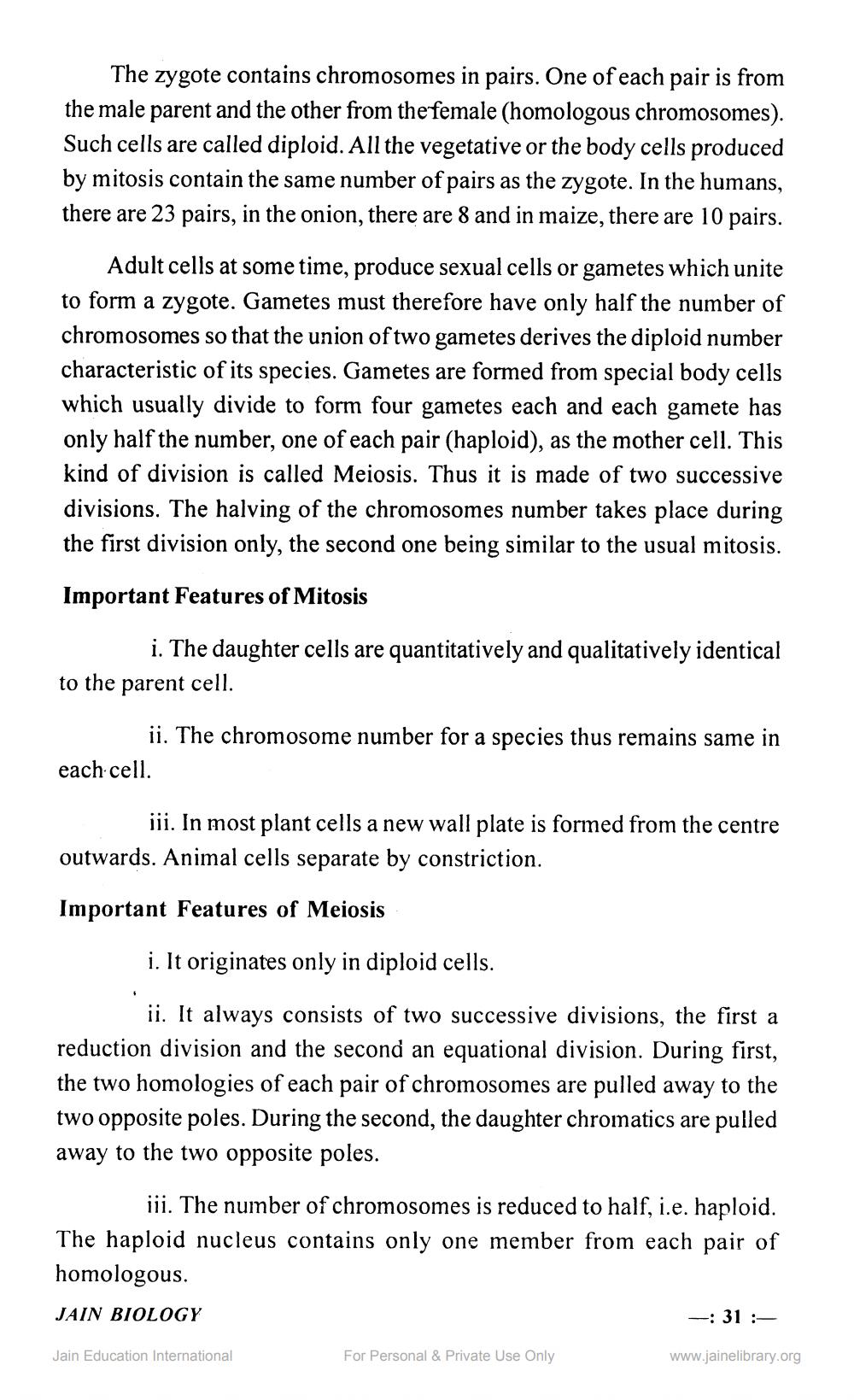________________
The zygote contains chromosomes in pairs. One of each pair is from the male parent and the other from the female (homologous chromosomes). Such cells are called diploid. All the vegetative or the body cells produced by mitosis contain the same number of pairs as the zygote. In the humans, there are 23 pairs, in the onion, there are 8 and in maize, there are 10 pairs.
Adult cells at some time, produce sexual cells or gametes which unite to form a zygote. Gametes must therefore have only half the number of chromosomes so that the union of two gametes derives the diploid number characteristic of its species. Gametes are formed from special body cells which usually divide to form four gametes each and each gamete has only half the number, one of each pair (haploid), as the mother cell. This kind of division is called Meiosis. Thus it is made of two successive divisions. The halving of the chromosomes number takes place during the first division only, the second one being similar to the usual mitosis.
Important Features of Mitosis
i. The daughter cells are quantitatively and qualitatively identical to the parent cell.
ii. The chromosome number for a species thus remains same in each cell.
iji. In most plant cells a new wall plate is formed from the centre outwards. Animal cells separate by constriction.
Important Features of Meiosis
i. It originates only in diploid cells.
ii. It always consists of two successive divisions, the first a reduction division and the second an equational division. During first, the two homologies of each pair of chromosomes are pulled away to the two opposite poles. During the second, the daughter chromatics are pulled away to the two opposite poles.
iii. The number of chromosomes is reduced to half, i.e. haploid. The haploid nucleus contains only one member from each pair of homologous. JAIN BIOLOGY
-: 31 :
Jain Education International
For Personal & Private Use Only
www.jainelibrary.org




